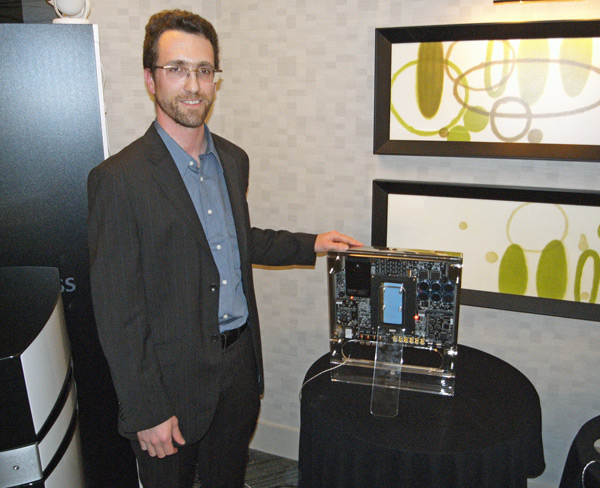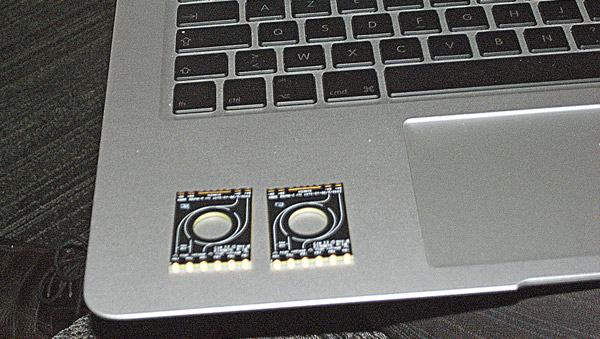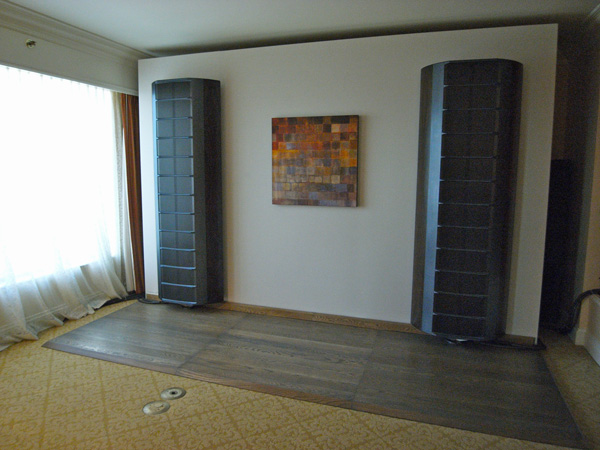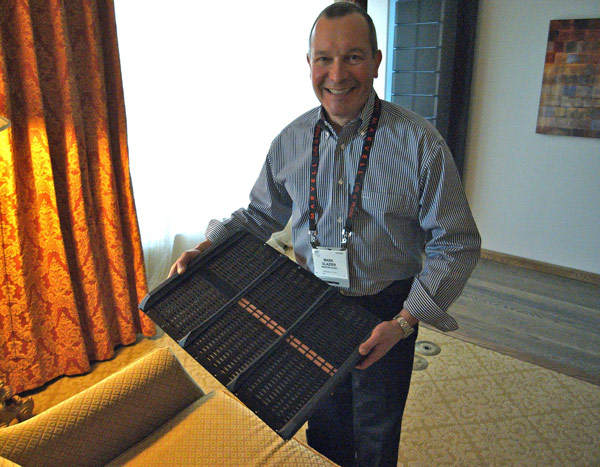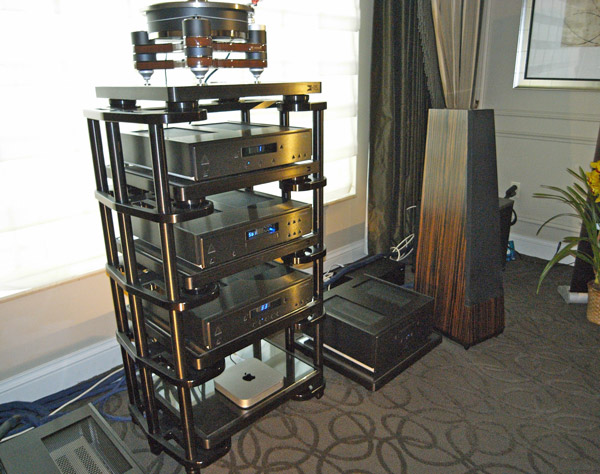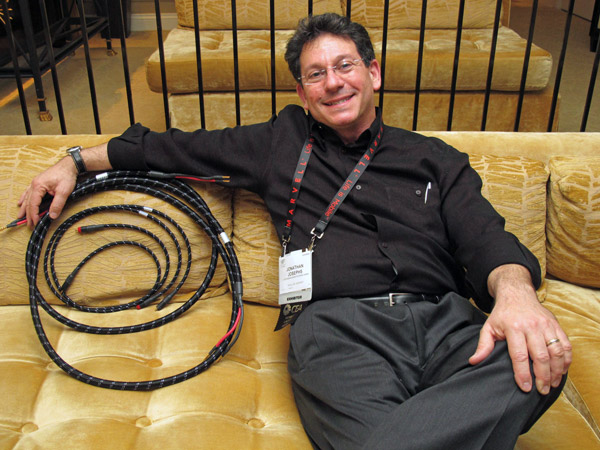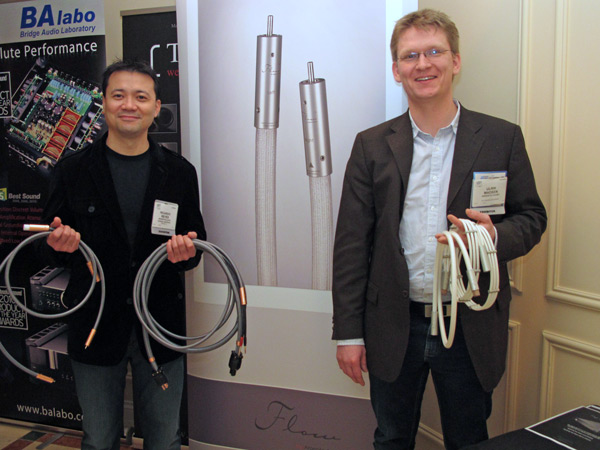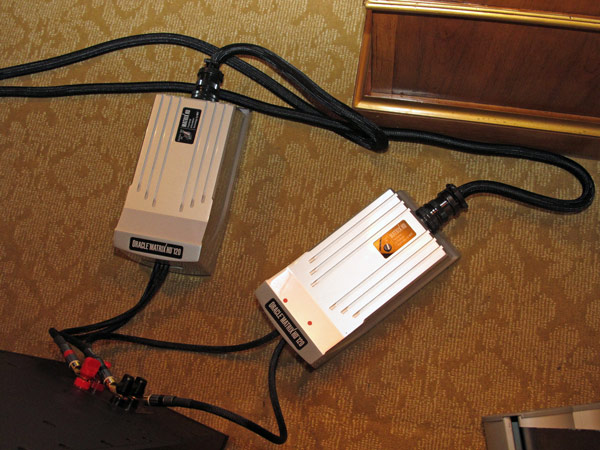LATEST ADDITIONS
Devialet & the D-Premier
Michael Fremer and I got up early Friday morning and headed to the Mirage hotel where Devialet, a new French audio company, and its new North American distributor, Audio Plus Services, hosted a breakfast gathering to unveil their new D-Premier ($15,995). Encased in a mirror-finished solid aluminum chassis, the D-Premier is an all-in-one DAC, streamer, preamp, power amp, and phono stage. Not only does the D-Premier combine all these features in one product, but it also has a new and novel amplifier section; a patented Analog Digital Hybrid.
The input signal goes directly to a class-A amplifier. Though the output of this connected to the speaker terminals, it can’t deliver enough current to do so without help. The necessary high current is sourced from a class-D amp. The analogy of this amplifier is like power steering on a car where the driver is assisted by a powerful engine to turn the wheels; the driver turns the wheel but the power steering does the heavy lifting. In the same way, the class-A section of the amplifier controls the class-D section. The idea is that the amp retains the sonics of class-A yet maintains 85% efficiency in a 240Wpc amp.
The Devialet design team Pierre-Emmanuel Calmel and Matthias Moronvalle (the latter shown in JA’s photo holding a demonstration version of the amp housed in acrylic)was insistent during the presentation the D-Premier is not a class-D amp.
The sound with Focal speakers was clear, balanced, open, and grain-free, with no hint of the hash sometimes associated with class-D amplification. (The eggs at the breakfast were also excellent.)
Devialet's power transformer
The Devialet D-Premier directly converts the wall current to DC, then uses a high-efficiency switch-mode power supply running at a very high frequency to power the audio circuitry. I asked Matthias Moronvalle if this meant that the power transformer could be much smaller than usual? His response was to show me the two small wafers sitting on his laptop. "That's the transformer," he told me, "with a continuous rating of 600VA." Ulp!
Ultimate Wisdom
The LS4 uses four identical push-pull modules, each comprising a central HF section operating above 750Hz flanked by midrange sections covering the 80–Hz range. The backwave is absorbed within the enclosure, but the enormous radiating area still gives a sensitvity of 100dB/2.83V/m. (Impedance is 4 ohms.) Though the LS4 is fastened to the wall behind it, the weight is supported by a single spiked foot.
The LS4 is where architectural audio becomes aspirational audio.
The Planar Wisdom
Vandersteen's new Tréo
Richard Vandersteen doesn't rush to release new loudspeakers, so given that the top-of-the-line Vandersteen 7 was a hot product at the 2010 CES, I wasn't expecting anything new at the 2011 Show. Talking to Richard in the company's Venetian suite, where they were featuring the Model 7, he casually mentioned that the new Tréo ($5990/pair) was at the Show, just not in his room. So I hustled me along to the Musical Surroundings room, where the Tréos were being demmed with a Clearaudio turntable and Aesthetix electronics.
Basically, the Tréo is similar to the $10k/pair Quatro Wood that Wes Phillips reviewed in December 2007, but replaces that speaker's active, equalized bass unit, with a conventional passive 6.5" woofer and an 8" flat-cone "acoustic coupler." Good sound at an equally good price.
Lindemann’s New Cable Line
Soon to be distributed by Jonathan Josephs of One World Audio (smilingly showing off his babies), and so new that the US price has not been set, Lindemann’s Kind of Blue cable line includes power cables, speaker cable, and interconnects. All are cryo-treated.
Power cables, which come either shielded or unshielded, contain up to 14 separate “twisted pair” conductors composed of high-purity copper. Insulation is “Teflon-like,” there are neither ferromagnetic materials nor magnetic screws, shielding (when used) is a conductive Gore-Tex coasted with carbon. Interconnects come single-ended or balanced, the latter with a special XLR connector that is completely free of steel and includes gold-plated contacts.
Gallo Classico
It was when I was going through the CES photo files on my computer that I ran across the photo that served as a reminder. Of courseAnthony Gallo! I visited his room in the Venetian briefly on the Press Day, when the exhibitors were still in the process of setting up. What drew me into the room was that, unlike other exhibitors that still had all their equipment in boxes, there was some music playing in Gallo’s roomand it sounded pretty nice. Anthony was hard at work, preparing loudspeaker cables for his speakers. I took his picture and promised to return later.
And I did, too, on the last day of the Show. The speakers that made their debut at the 2011 CES represent a significant change for Anthony Gallo’s approach to speaker design: instead of the spherical enclosures, the new Classico line uses traditional wooden boxes enclosures. The speakers (there are five in the line, plus a subwoofer) combine a cone midrange/bass driver with Gallo’s own Cylindrical Diaphragm Transducer (CDT). (That is, except the lowest-priced Series I, which has a dome tweeter.) The speakers also feature something called BLAST, which “reveals the true potential of the box.” (Yes, I found the product literature, which was hiding in one of the compartments in my luggage. It mentions BLAST, but doesn’t have any information on it.) The speaker that I heard initially, and that I had a chance to listen to again, was the Classico Series II ($1195/pair), the smallest speaker to use the CDT tweeter. And it still sounded pretty nice.
Organic Cables
Ulrik Madsen (right), who designs the cables and owns the company, was on hand to discuss his products. All Organic Audio cables are derived from Argento Audio’s entry-level Argento Serenity. “I wanted to take advantage of the connectors I developed for Argento,” Madsen explain. “We make all our Organic Audio connectors ourselves from the same metal as the conductors in the cables, which is OFC 99.997% copper. (The more expensive Argento cabling uses silver). There are no solder points; all attachments are made by applying set-screws to accomplish compression.
MIT’s New Matrix Line
The new speaker cable comes in three flavors: Oracle Matrix HD 90 ($9999/8ft pair), Oracle Matrix HD 100 ($14,999/8ft pair), and Oracle Matrix HD 120 ($21,999/8 ft pair). There is one interconnect, Matrix 50 ($4999/1m pair, $5999/1m balanced pair). For digital cabling, one needs to go up one step in the reference line to Oracle MA-X digital ($3495/1m RCA or BNC, $3995/1m AES/EBU)
These new cables use MIT’s multi-pole technology. “We talk about poles of articulation,” said Holt. “There are electronics inside our boxes on the cables to provide wider bandwith coverage to power, so that sounds at either end of the spectrum won’t be rolled off as quickly.” The Matrix cables also employ a new technology called F.A.T. (Fractional Articulation Technology) that helps maintain the harmonic structure of audio signals.
In the Magico room where they were displayed, the new Magico Q3, Soulution amplifiers, and files from Paul Stubblebine’s Tape Project made wonderful music through Oracle Matrix HD 120 speaker cable and the Oracle MA-X interconnects (start at $8495/1m pair). You can see the Oracle Matrix HD 120 boxes in the above photo, which was taken behind one of the Magico speakers. If other rooms hadn’t called, I would have dropped everything then and there and stayed for hours.


